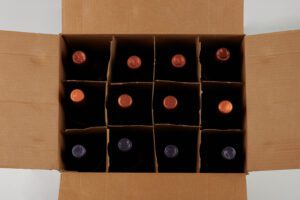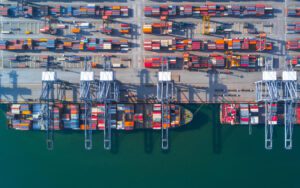When it comes to importing wine and its challenges, the most important factor is logistics since it is not an easy task to find balance between cost reduction, time and stock in order to obtain competitive advantages. Nonetheless it is fundamental to protect your business from inevitable obstacles concerning supply chain. On top of these hurdles, there is the fact that wine has a high cost but yet it is a fragile product in such a busy international transportation environment. As soon as you overcome these issues, your company will own this complex world of logistics to import wine.
Moving forward in terms of logistics to import wine, Allog has developed actions and content to provide expertise in wine business to offer unique services to traders.

It is pivotal to know all the procedures to import wine. For further information about the ideal logistics, optimization and risk mitigation read below our 9 steps for imported wine to reach your table.
- Wine is placed in boxes for 6 or 12 bottles. These bottles might be safely transported in pallets to guarantee more stability.
- The wine will be collected in the vineyard and transported by road as far as the warehouse in the country of origin so that the trader will commence the shipping procedures.
- The logistics agent makes the “bubble-foil” and the stuffing inside the container handling weight limits for each box. The temperature control can be in either pallets or loose boxes. There can never be some space between the boxes. Therefore, airbags or foam inserts might be the perfect solution for this condition.
- The container is transported as far as the boarding terminal.
- The container is loaded in the vessel bound for Brazil. In case the company is shipping high-cost wine, the usual choice is a reefer. It is highly recommended to avoid leakage as well as high temperature.
- As soon as the vessel reaches in Brazil, the container will be inspected by MAPA (Brazilian Ministry of Agriculture, Livestock and Supply). For this reason, it is a good practice to have easy access to a sample box for each type of wine near the container.
- After this aforementioned inspection, MAPA shall release the container and then it will be taken to a warehouse.
- A bottle of wine sample leaving Portugal the original port is supposed to last for one week. Consider 15 days in the journey directly to Santos, some more time for MAPA analysis and the transportation as far as the warehouse.
- Finally, the product shall be nationalized and transported to all Points of Sale. The final customers shall find this imported wine in deli shops, supermarkets and wine stores.
>>> Read more: Wine Logistics win exclusive and digital books
* This article was written by Tatiana Piazza – She is a key member of Allog Corporate Sales Development and Holds a Certificate from Wine & Spirit Education Trust. (WSET Diploma)


